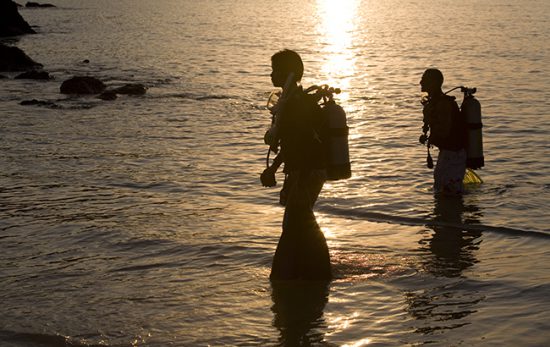If this trailer has whet your appetite for discovering more about the 3D scanning of SS Thistlegorm in the Thistlegorm Project, then read on for our interview with Simon Brown…
What exactly is the Thistlegorm project?
The Thistlegorm Project is part of a wider maritime archaeology project called Presence in the Past, which is a Newton Fund project directed by Dr Jon Henderson of the University of Nottingham. When the rest of the world thinks about Egypt and its history, places such as Pyramids and the Sphinx are widely known but the history goes far wider and deeper (no pun intended!) than these iconic places. The underwater heritage is out of reach to most, so the University of Nottingham, Al Shains and Alexandria University are collaborating on 3D and virtual reality projects that bring submerged subjects to the surface and let everyone appreciate just what lies on the seabed.
Why this wreck?
The SS Thistlegorm is widely known amongst the diving community and regularly appears in those “top ten” dive lists that appear from time to time. But the wreck and its story is hardly known outside of the diving community. Bringing such an iconic and popular shipwreck to the surface and telling its tale as a 3D model and 360 video the Thistlegorm the ideal candidate.
Both the ship itself, its history and the cargo carried makes the Thistlegorm extremely interesting subject to scan. But there was another reason: After 76 years of immersion in salt water the Thistlegorm is at risk. The numbers of dive boats that visit and moor to the wreck are placing a strain on the ship that is damaging the site. We now have a baseline survey that will enable any changes to the structure to be monitored.
Have you done anything like this before?
I have scanned quite a few wrecks in UK waters, but the Thistlegorm presented a lot of challenges, not least of which is the sheer size, scale and complexity of the wreck. Prior to the Thistlegorm, the largest wreck I had scanned was the SS Gwladmena but this ship was only 70m long, 10m wide and just one deck. When built, the Thistlergorm was 131m long, 22m high and has multiple decks. Diving, scanning and processing this wreck took a lot of time and generated terabytes of data, but eventually all the pieces fell into place.
In addition to the 3D model Jon Henderson, Mike Postons and myself shot a lot of 360 video that will be viewed online and used in VR headsets. As divers, we all agree that this immersive experience is very close to feeling what it is like to explore such a great wreck, but not actually get wet.
When will everything be unveiled?
The website goes live on the 6th of October 2017, which is the 76th anniversary of the sinking of the Thistlegorm. You can also check out the 3D digital guide in the Apple Store now.
If you’re interested in wrecks and want to get up close and personal with them, why not take a look at our Wreck Diver Specialty?

